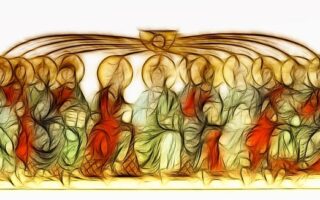The Garden of Eden is one of the most mysterious and fascinating places in the Bible. It is a place of beauty and abundance, and it is the birthplace of humanity. But where exactly is the Garden of Eden? This question has been debated for centuries, and there are many theories about its location. In this article, we will explore the various theories and look at the evidence for each one. We will also discuss the implications of the Garden of Eden’s location and its significance in the Bible.
Table of Contents
Exploring the Mythology of the Garden of Eden
The Garden of Eden is one of the most famous stories in the Bible, and it has been the source of much debate and discussion over the centuries. It is a story of innocence, temptation, and the consequences of disobedience. But what is the Garden of Eden really all about?
The Garden of Eden is described in the Bible as a paradise, a place of perfect beauty and harmony. It was a place where Adam and Eve lived in perfect harmony with God and nature. The Garden was filled with lush vegetation, and it was said to be the source of all life.
The Garden of Eden is also associated with the Tree of Knowledge of Good and Evil. This tree was said to be the source of knowledge and wisdom, and it was forbidden to Adam and Eve. When they disobeyed God and ate from the tree, they were cast out of the Garden and into the world of suffering and death.
The Garden of Eden is also associated with the serpent, which is said to have tempted Adam and Eve to eat from the Tree of Knowledge. This serpent is often seen as a symbol of evil and temptation, but it can also be seen as a symbol of wisdom and knowledge.
The Garden of Eden is a powerful story that has been interpreted in many different ways over the centuries. It is a story of innocence, temptation, and the consequences of disobedience. It is a story that can be interpreted in many different ways, and it is a story that can be used to teach us about our own lives and our relationship with God.
Examining the Historical and Religious Significance of the Garden of Eden
The Garden of Eden is a place of great historical and religious significance. It is mentioned in the Bible as the place where God created the first humans, Adam and Eve. It is also the place where they were tempted by the serpent and ate the forbidden fruit, leading to their expulsion from the Garden.
The Garden of Eden is a symbol of innocence and purity, and it is often used to represent the perfect state of humanity before the Fall. It is a place of beauty and harmony, and it is seen as a paradise where humans can live in perfect harmony with nature.
The Garden of Eden is also a symbol of hope and redemption. It is a reminder that even after the Fall, God still offers us a chance to be redeemed and to return to the Garden. This is a powerful message of hope and faith, and it is one that has been embraced by many religions throughout history.
The Garden of Eden is also a place of great spiritual significance. It is seen as a place of divine connection, where humans can commune with God and experience a deep spiritual connection. This is why many religious traditions have rituals and ceremonies that take place in the Garden of Eden.
The Garden of Eden is a powerful symbol of hope and faith, and it has been an important part of religious and spiritual traditions for centuries. It is a reminder that even after the Fall, God still offers us a chance to be redeemed and to return to the Garden.
Investigating the Possible Locations of the Garden of Eden
Have you ever wondered where the Garden of Eden was located? It’s a question that has been asked for centuries, and one that has yet to be answered definitively.
The Garden of Eden is a mythical paradise described in the Bible as the home of Adam and Eve. It is said to have been a place of perfect harmony and beauty, with lush vegetation and abundant wildlife. But where exactly was it located?
The Bible doesn’t provide a clear answer, but there are several theories about its possible location. Some believe it was in the Middle East, in what is now Iraq or Syria. Others think it may have been in the area of the Tigris and Euphrates rivers, which are mentioned in the Bible. Still others suggest it could have been in the Arabian Peninsula or even in Africa.
No matter where it was located, the Garden of Eden was likely a place of great beauty and abundance. It’s a place that has captured the imagination of people for centuries, and one that continues to fascinate us today.
Uncovering the Symbolic Meaning of the Garden of Eden
The Garden of Eden is a powerful symbol in many cultures and religions, representing a paradise of innocence and beauty. It’s a place of harmony and abundance, where humans and nature live in perfect balance. But what does it really mean?
At its core, the Garden of Eden is a symbol of the perfect state of being. It’s a place of peace and contentment, where all of our needs are met and we can live in harmony with nature. It’s a reminder that we can find joy and fulfillment in life, even in the midst of chaos and suffering.
The Garden of Eden also symbolizes the potential for growth and transformation. It’s a reminder that we can always strive to become better versions of ourselves, and that we can find joy and fulfillment in life, even in the midst of chaos and suffering.
The Garden of Eden is also a symbol of hope. It’s a reminder that even in the darkest of times, there is still a chance for redemption and renewal. It’s a reminder that we can always strive to become better versions of ourselves, and that we can find joy and fulfillment in life, even in the midst of chaos and suffering.
Ultimately, the Garden of Eden is a powerful symbol of the potential for growth and transformation. It’s a reminder that we can always strive to become better versions of ourselves, and that we can find joy and fulfillment in life, even in the midst of chaos and suffering.
Conclusion
The Garden of Eden is a mythical place that has been the subject of much debate and speculation throughout history. While its exact location is unknown, it is believed to have been located somewhere in the Middle East, possibly in the area of modern-day Iraq. It is a place of great mystery and intrigue, and its exact location may never be known.
For licensing reasons, we must provide the following notice: This content was created in part with the help of an AI.


